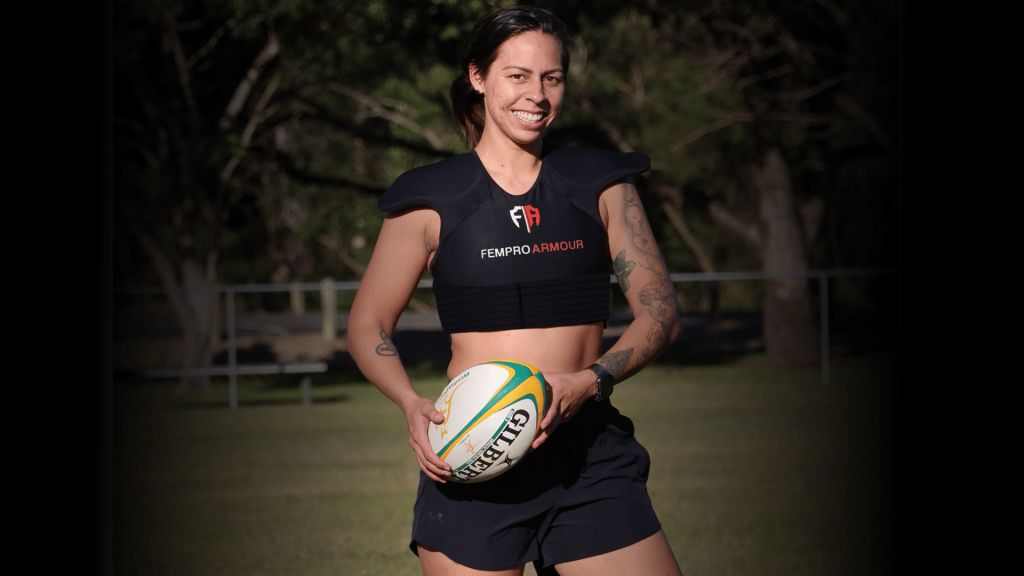
The best way to be protected and minimize injuries and concussions
AFL, Rugby, NRL, Basketball, Roller Derby and more….
High-impact collisions are a defining feature of rugby, especially in scrums, tackles, and rucks. While the physicality is part of the game’s appeal, it often leads to serious injuries such as concussions and bone fractures. In fact, concussions are the most common injury in professional rugby union, typically caused by direct blows to the head.
However, you don’t always need to hit your head to sustain a concussion. During a tackle, the athlete’s body experiences a sudden, blunt stop, while the head continues to move, causing the brain to jolt inside the skull. This can result in a concussion, even without direct impact.
FemGuard Pro Impact Vest
Protection for shoulder, chest, collarbone, sternum, ribs & back
$225 AUD

I recently tried out Fempro Armour, and wow, I am seriously impressed! I’m 13, and I’ve been looking for a way to feel safe and confident while playing sport. I’ve been playing rugby for Surfers Dolphins since under 7’s and I have always needed to buy ill-fitting shoulder guards that were hot and heavy. When I played with it on, it doesn’t even feel like anything is there. It is really light and breathable. Fempro Armour totally changed the game for me!
daughter of Courtney Allan – Surfers Paradise Rugby Union Club

I recently tried out Fempro Armour, and wow, I am seriously impressed! I’m 13, and I’ve been looking for a way to feel safe and confident while playing sport. I’ve been playing rugby for Surfers Dolphins since under 7’s and I have always needed to buy ill-fitting shoulder guards that were hot and heavy. When I played with it on, it doesn’t even feel like anything is there. It is really light and breathable. Fempro Armour totally changed the game for me!
Katrina Curran – Surfers Paradise Rugby Union Club
Studies
The Occurrence, Causes and Perceived Performance Effects of Breast Injuries in Elite Female Athletes – Click HERE
Criteria Developed for Diagnosing CTE Symptoms in Living People – Click HERE
Chronic Traumatic Encephalopathy (CTE) – Click HERE











